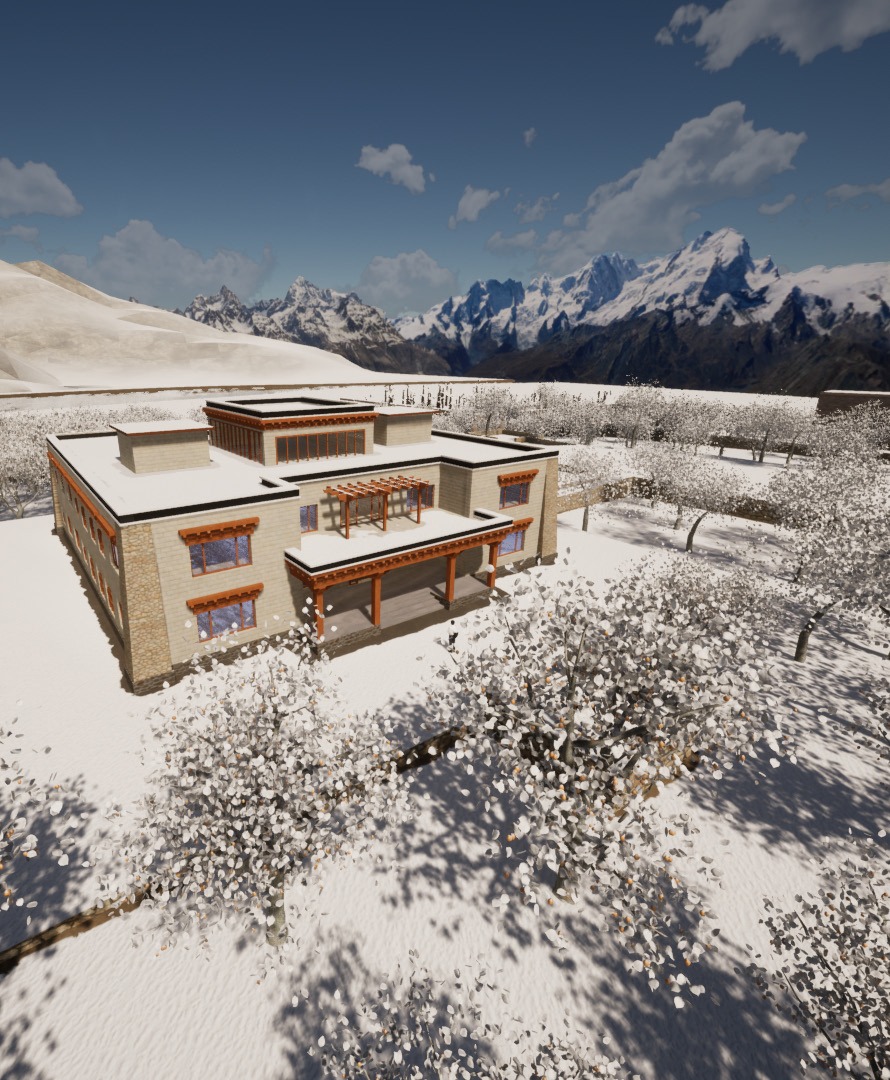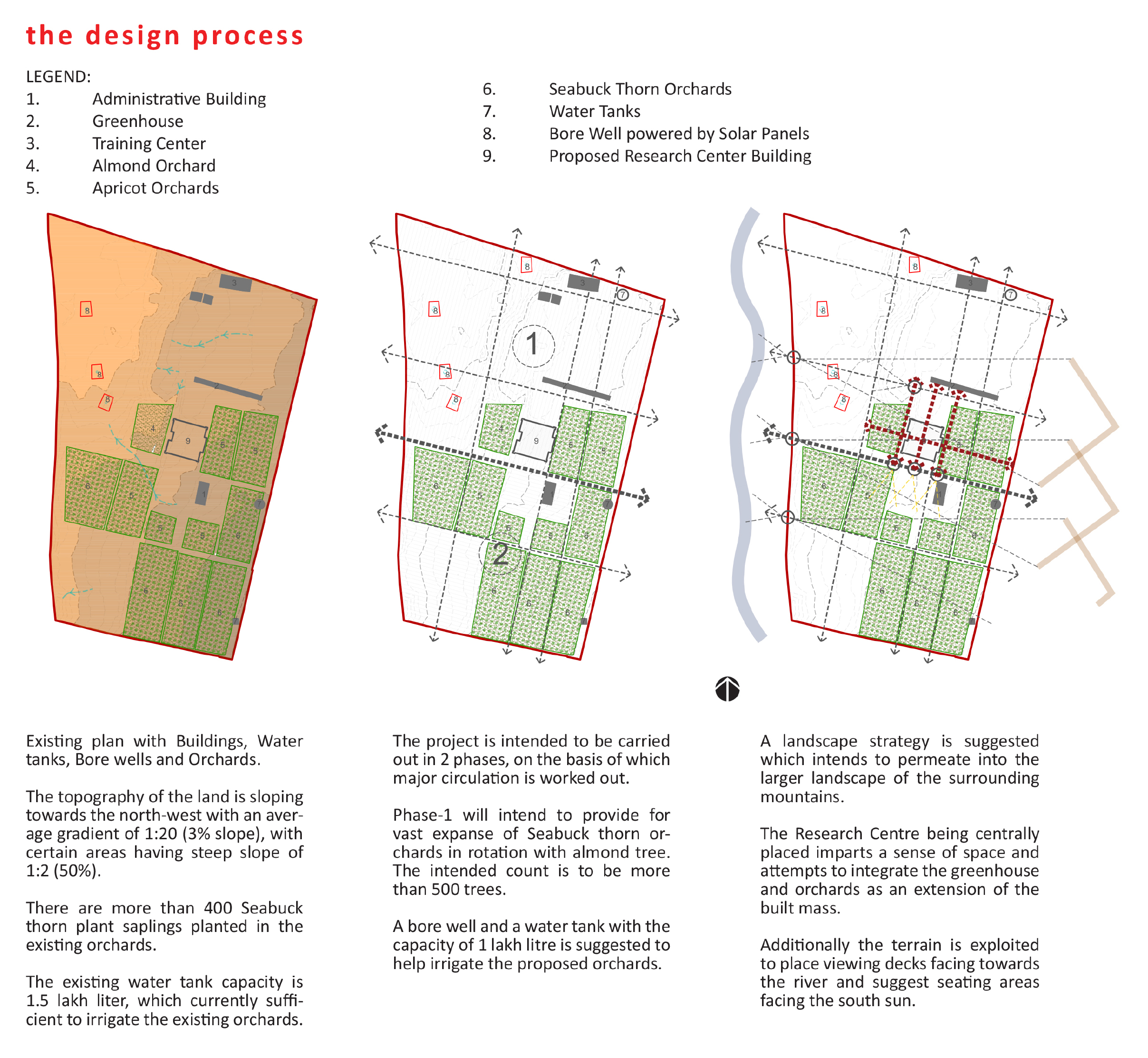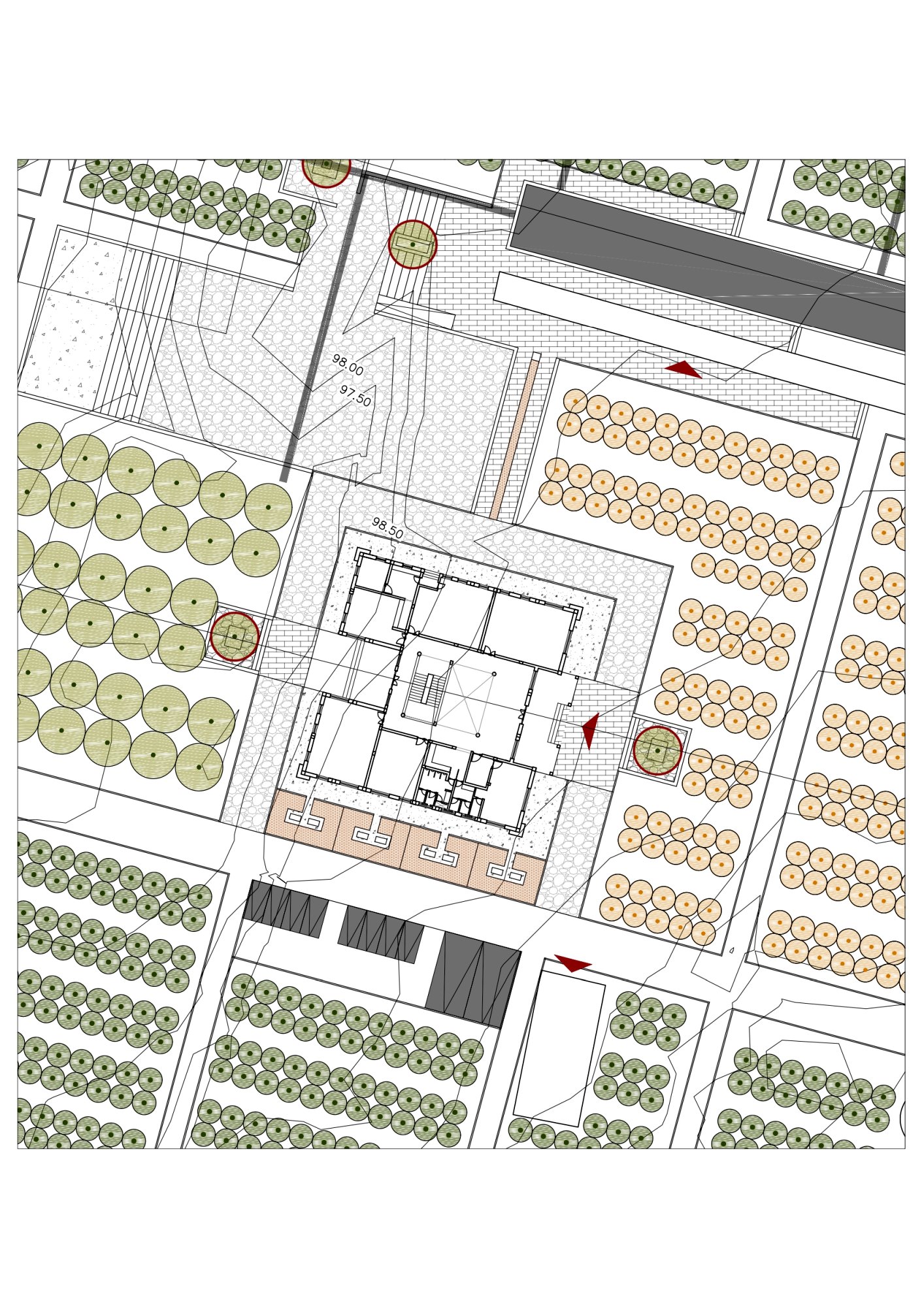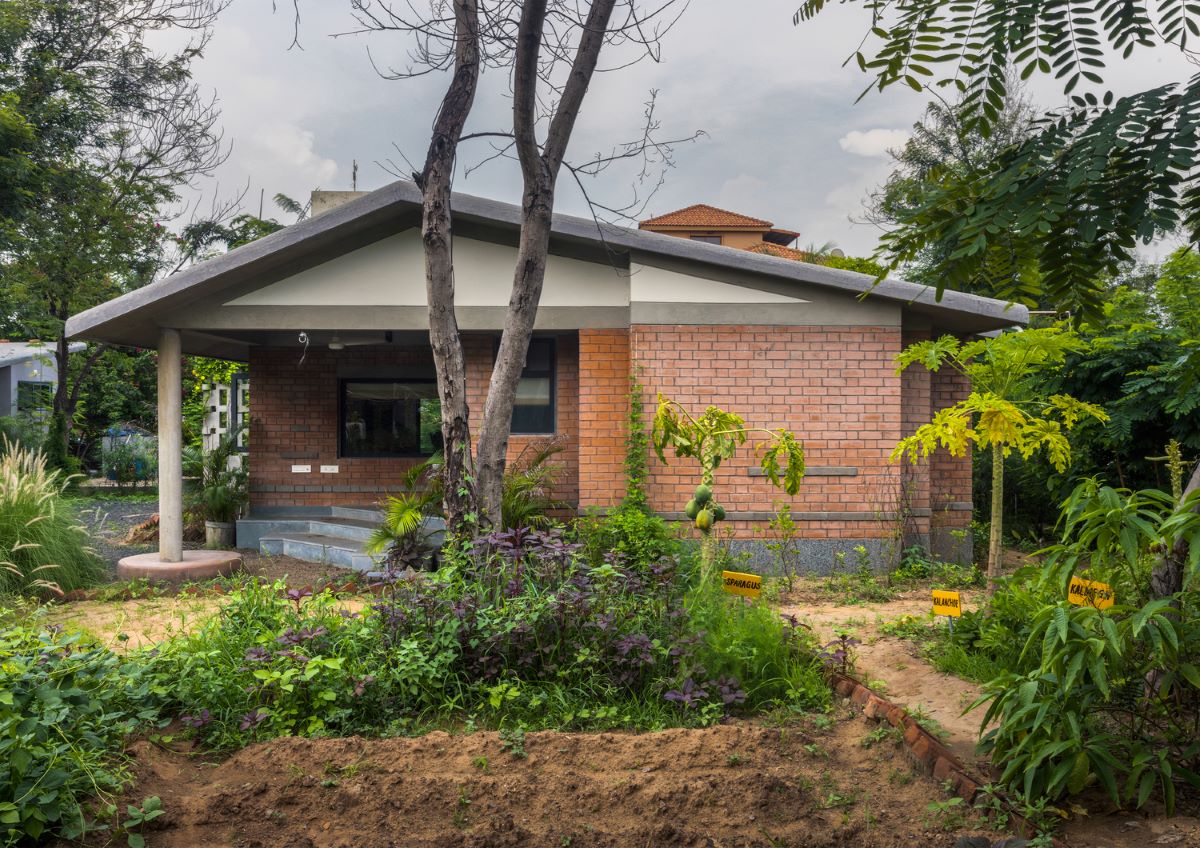Sea Buckthorn Excellence Centre, Nimoo, Ladakh designed by Emara.
The site for the Sea Buckthorn excellence centre is adjacent to Sangam, the confluence of the Indus and Zanskar Rivers. The Ladakh region is home to a number of endemic species- Sea Buckthorn, which is grown extensively in the Ladakh region, has ecological and economical significance. To tap the potential of the wild native species, a research block is placed at the site.

The architecture of the site is a blend of vernacular and modern and will be the first state-of-the-house building with all the modern facilities required for an excellence centre.

The landscape intervention at the site is kept minimum keeping in mind the already beautiful view from the site and surroundings. The design explores the Buddhism philosophy of simple living. The site is visible from far-off places due to its location. The ecological context is fragile, so the landscape strategy aims to ensure a completely self-regulating system of water management. The overall design will provide comfortable interactive spaces celebrating local culture and skills.

Architecture Expression
The site celebrates the use of local expertise in craftmanship, traditional construction skills and symbolic aspects of architecture, reinterpreting local traditional techniques with a contemporary pioneering and sensitive approach in all aspects of design. The design vocabulary of the site is a blend of vernacular and modern and will be the first state-of-the-art building with all the modern facilities required for an excellence centre.

Landscape Vision
- Use of locally available materials, which have the least impact on the immediate surrounding and environment.
- Minimizing water use by providing zing (water tank), refining and adapting traditional techniques to provide modern solutions.
- Simplistic and minimalistic forms
- Permeating into the larger landscape of the region
- Imparting a sense of Identity to the village
- Adoption and adaption by a variety of vernacular materials and forms
- Landscape integrates the building and the orchard, also placing the context such that one can hear the white noise of the rover and see the mountains with the site acting as the foreground an orchard at the waters meet
Drawings
Project Facts
Architect: Shiekh Intekhab Alam
Landscape Architect: Amrita Kaur Slatch
Structure: Nazir Din
Site Engineer: Munshi
Contractor: Angchok
Area: 15.3 Acres
Client Name: Horticulture Department, Leh
Building Type: Institutional












